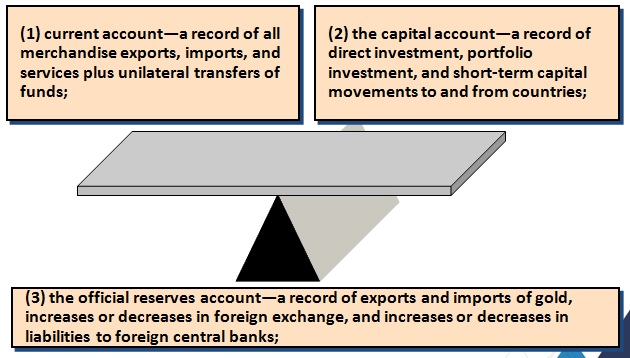Module 3 International Economics – International Trade
Stop scrolling and get the academic solutions on International Trade – The Balance of Payments and Exchange Rates Assessment. We provide 100% plagiarism-free work with the help of our experienced and highly educated writers. Students who are looking for a Professional Academic Writing Service can contact us at any time.
International Trade Assessment:-
Trade
- Buying and selling goods and services from other countries
- The purchase of goods and services from abroad that leads to an outflow of currency from the COUNTRY – Imports (M)
- The sale of goods and services to buyers from other countries leading to an inflow of currency to the COUNTRY – Exports (X)
The Flow of Currencies:
Specialisation and Trade
Different factor endowments mean some countries can produce goods and services more efficiently than others – specialisation is therefore possible:
Absolute Advantage:
- Where one country can produce goods with fewer resources than another
Comparative Advantage:
- Where one country can produce goods at a lower opportunity cost – it sacrifices less resources in production
Balance of Payments
- When countries trade there are financial transactions among businesses or consumers of different nations
- Money constantly flows into and out of a country
- The system of accounts that records a nation’s international financial transactions is called its balance of payments (BP)
- It records all financial transactions between a country’s firms, and residents, and the rest of the world usually over a year
- The BP is maintained on a double-entry bookkeeping system
The BP is the difference between receipts and payments
The BP includes three accounts:
Balance of Payments and Exchange Rate
- If a country’s expenditures consistently exceed its income, its standard of living falls
- Its exchange rate vis-à-vis foreign monies declines
- When foreign currencies can be traded for more dollars, U.S. products are less expensive for foreign customers and exports increase
- Simultaneously foreign products are more expensive for U.S. buyers and the demand for imported goods is reduced
Balance of Trade
- Difference in value between its Exports and Imports
- Export is the sale of goods and services to foreign markets
- Import is the purchase of goods and services from foreign sources
- Difference in value between its Exports and Imports
Favorable Balance of Trade :
- When Exports are more than Imports
Negative Balance of Trade or Trade Deficit :
- When Imports are more than Exports
Trade deficits may contribute to
- failure of business ,
- loss of jobs ,
- lower standard of living and other economic and social problems
Exchange Rates
Floating Exchange Rates:
- Price determined only by demand and supply of the currency – no government intervention – India
Fixed Exchange Rates:
- The value of a currency fixed in relation to an anchor currency – not allowed to fluctuate – UAE
Dirty Floating or Managed Exchange Rate:
- Rate influenced by government via central bank around a preferred rate – China
Foreign Exchange Markets
Foreign exchange: all forms of internationally-traded monies including currency, bank deposits, checks, and electronic transfers.
Foreign exchange market: the global marketplace for buying and selling national currencies
Exchange rates fluctuate constantly. E.g., yen-dollar
exchange rate:
- 1985 – 240 yen to the U.S. dollar.
- 2017 – 114 yen to the dollar (nearly 40% appreciation).
How Exchange Rates are Determined
In a free market, the “price” of any currency (rate of exchange) is determined by supply and demand:
- The greater the supply of a currency, the lower its price
- The lower the supply of a currency, the higher its price
- The greater the demand for a currency, the higher its price
- The lower the demand for a currency, the lower its price
Appreciation and Depreciation: Example
Euro appreciation: If the euro-dollar exchange rate goes from one euro = $1.25 to one euro = $1.50, the euro becomes expensive to Americans
Euro depreciation: If the euro-dollar exchange rate goes from one euro = $1.25 to one euro = $1.00, the euro then becomes cheaper to Americas
Foreign Exchange Rate
Ratio of the currency of one nation to the currency of another nation
When the value of the currency depreciates
- exports are profitable and imports cost more
- China keeps its currency intentionally depreciated as it Exports more than it imports !!!
When the value of the currency appreciates
- exports become less profitable and imports cost less
- Decrease in Japanese exports to U.S.; Increase in U.S. exports to Japan
Example – Currency Depreciation- good for exports
Suppose $1= 114 Yen Which means Yen is a weaker currency. Now when Japan exports , it will receive 114 yen x for 1 $. Suppose the currency depreciated further;
Now $1 = 120 yen
So now it will receive 120 yen for 1$ which is profitable
Example – Currency Appreciation – good for imports
Suppose $1= 100 Yen which means the currency has appreciated Now when Japan imports , it will spend only 100 yen for 1 $. Suppose the currency appreciated further;
Now $1 = 95 yen
So now Japan will spend 95 yen for 1$ when importing which is profitable.
Exchange Rates
Determinants of Exchange Rates:
- Exchange rates are determined by the demand for and the supply of currencies on the foreign exchange market
The demand and supply of currencies is in turn determined by:
- Relative interest rates
- The demand for imports (D£)
- The demand for exports (S£)
- Investment opportunities
- Speculative sentiments
- Global trading patterns
- Changes in relative inflation rates
Exchange Rates






